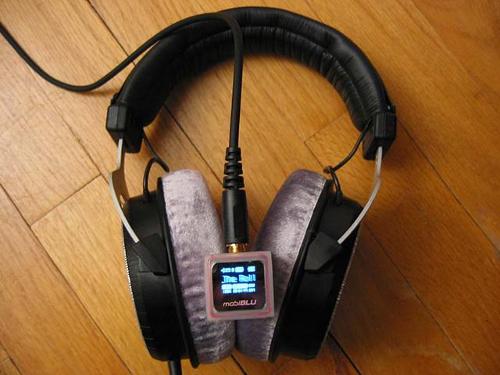Fourteenth A / B comparison: Beta 22 & Fii0 E9 :: USING THE AUDIO-GD NFB-10ES AS THE SOURCE (instead of the earlier Cambridge DAC Magic)
THIS IS NOT A SCIENTIFIC TEST.
The Audio-Gd NFB-10ES uses a newer-generation, more sophisticated DAC, and it uses all discrete analog stages instead of IC op amps like the DAC Magic. In addition, the Audio-Gd NFB-10ES uses "boutique" capacitors whilst the DAC Magic uses garden-variety electrolytics in it's signal path. On top of this, the power supply for the Audio-Gd NFB-10ES is much larger, much more sophisticated and more tightly regulated / lower impedance than the "wall wart" that powers the DAC Magic. PLEASE NOTE THIS IS NOT A COMPARISON OF THE TWO DACs. That will come later, in another thread.
LCD-2: I heard a slight difference in bass, with the Beta 22 delivering more texture. Both amps had good bass extension. Midrange was identical as far as I could hear. I could hear a minor difference in treble, but I am hard pressed to characterize it because the difference was so small.
HD800: These headphones, with their treble emphasis, pointed up the high frequency differences of these two amps more clearly. The FiiO had a more romantic sounding top end, while the Beta 22 was clinical. The Beta had greater transparency and you could "hear through" to the original recording more- for good or ill. On some recordings a more honest presentation helped me hear flaws in the recording. On such recordings, any harshness present in the original material was clearly audible through the Beta 22 to the HD800s. If the original recording was fine and sweet, then it sounded that way on the HD800's through the Beta. The FiiO had that small amount of romantic lushness. Bass texture was also better with the beta 22 on the HD800s but this was not as noticeable as with the LCD-2's; HD800s just don't have the bass performance of the planar 'phones, and so the richer texture from the Beta doesn't stand out as much as with the LCD-2's.
I can't comment on the sound of the DAC Magic vs. the NFB-10ES, as I did not compare them directly; that will come later, in another thread. I will say that with the DAC Magic I heard minor differences in the bass and treble between these two amps. And now with the NFB-10ES I again heard minor differences between the amps. Using a better DAC did not point out glaring differences between these amps. I would be prepared to say that I MIGHT have heard a little more difference in the amps using th NFB-10ES as a source, but that it is really hard to say if that's real or something based on preconceptions.



























